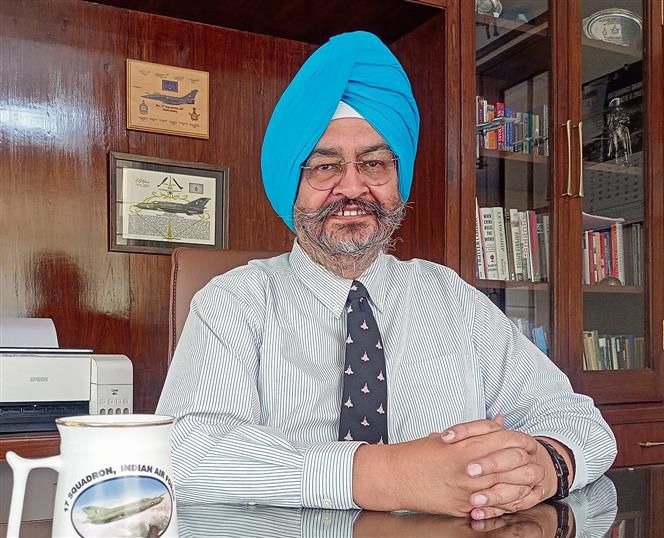‘From Kargil to Balakote, big change in Indian Air Force’s operational capability’
Vijay Mohan
Chandigarh, July 14
In the summer of 1999, the Indian Air Force (IAF) carried out night strikes for the first time along the Line of Control (LoC) in the Kargil Sector opposite Pakistan-occupied Kashmir (PoK) to evict Pakistani intruders. Twenty years later, it carried out strikes across the LoC, hitting terrorist camps at Balakote in PoK.
Better combat platforms now
We now have much more modern combat and support platforms that are highly accurate in terms of strike and surveillance capability. Air Chief Marshal BS Dhanoa (retd)
Between the two war-like situations, there has been a huge transformation in the IAF’s operational capability. “The world has changed,” Air Chief Marshal BS Dhanoa (retd), who had commanded a MiG-21 squadron during the Kargil operations and as Chief of the Air Staff had overseen the Balakote strikes, told The Tribune in the run-up to the conflict’s 25th anniversary.
“We now have much more modern combat and support platforms that are highly accurate in terms of strike and surveillance capability,” he said, adding that these also gave the IAF the ability to operate over long distances from depth areas.
The IAF carried out the first attack sortie on May 26, 1999. However, by May 12, the entire Pakistan Air Force had already been deployed operationally, a fact that the Indian defence establishment was unaware of till much later. “It was an intelligence failure. At that time, our information gathering was primarily based on interception of radio transmissions and the Pakistanis maintained radio silence to move in quietly. Such a situation no longer exists,” he said.
Since then, the IAF has inducted advanced multi-role combat aircraft like the Sukhoi-30 and Rafale as well as support elements like mid-air refuelling aircraft, airborne warning and control systems, reconnaissance satellites, electronic warfare systems, radars and precision munitions, all on the back of a network-centric environment.
Pointing out that the discrepancies and deficiencies that existed during the Kargil conflict were sorted by 2004-05, he said now, there was no need for carrying out any innovations in the field to meet operational requirements as was done in 1999.
“The ballistic tables meant for the release of bombs did not exist for the heights we were operating in Kargil. We had to recalculate the ballistics to cater to the rarefied air and the high altitude,” Dhanoa said.
“Also, given the MiG-21’s rudimentary avionics, we carried hand-held GPS in the cockpit for navigation to get the accurate track and speed when carrying out bombing runs,” he added.
Another challenge for the IAF were the “balloon barrages” deployed by Pakistan. Numerous balloons were tethered at various places along the LoC to obstruct low-flying aircraft. More than the balloons, it was the poorly visible strings to which they were attached that posed a threat to aircraft.
“A simple solution to this came from a youngster in the squadron. It was simply observing the direction of the wind on the GPS, by which the downwind position of the string could be ascertained, thus enabling the pilots to navigate accordingly to avoid flying into them,” he said.
Dhanoa recalled another instance when the then Chief of Air Staff, Air Chief Marshal AY Tipnis, was on a visit to the sector. During a get-together at night, he was surprised by the Chief who told him that he wanted to fly with him on an operational sortie the next morning.
The remaining part of the night was spent in planning the sortie and the next morning, Tipnis and Dhanoa flew in a two-seater MiG-21 over Mushkoh valley on a bomb damage assessment mission.
The caveat for the Chief was that the aircraft, in which he was in the front seat, would have the squadron commander’s call-sign of ‘Arrow One’ instead of the Air Chief’s call-sign of ‘Air Force One’.
Night strikes by MiG-21s during the conflict, Dhanoa said, proved to be much effective than day-time missions as they were carried out by flying just about 1 km over the target areas and the snow-clad mountains provided good illumination on moon nights.









